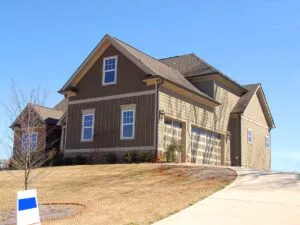After you start an income, one of the best things you can do for yourself is to start investing.
While land might not be considered a glamorous option in real estate circles, buying parcels of land here and there can offer great returns in the future.
At times, the land is inherited or gifted to you by different parties. Either way, landowners from time to time need to figure out what their land is worth.
How to Find Value of Land
You might have an old appraisal from the time you bought the land. Over time, the value of land changes depending on different things.
Land does not depreciate in an economic sense. It can, however, lose value.
Whether you are just curious, looking to sell, or trying to tally up your assets, some effort and research can give you a solid estimate of your land’s value.
Here are some methods used to value land.
Cost approach

This is an approach used to value land as it is without any improvements.
To do this, determine if there are other parcels of land near yours and what their value is. If you can find multiple comparably-sized parcels and their going rates, you can use their value to get a ballpark figure of your land’s value.
Realtors and the local tax office often have these figures.
Pay attention to special features. If their parcels are closer to the main road or other amenities in the area, their value will be higher than yours. Be sure to factor in such details.
Comparable sales
With this, look at properties in the same location as yours that are up for sale and find an average price to value yours.
For this to be accurate, you need to find sales or land sale adverts that are as recent as possible. Use a couple of these to get an average. Divide the cost per square footage of each property in order to get the going rate per square foot of land.
Use the final figure to multiply by the size of your and to get its total worth.
It does not end here, however. Keep in mind that land parcels even adjacent to each other can have differentiating features.
Once you get an average of what land in your area is selling for, make the required cost adjustments. Issues like zoning, topography, parcel shape, and size. If any of these factors are less than ideal, adjust the figure downwards to accommodate the unfavorable features.
Income approach
There are ways to value land using the income approach method.
The first is used when there is some commercial activity on the land. If this is the case, use the current net operating income (NOI) to value the land.
If the and is idle, you can use its potential income to determine value. To do this, look at the land’s potential by determining the best and highest use of the land. Calculate what the net operating income would be if it were used in this manner. This becomes the value of the land.
Speak to a Realtor
Realtors have a lot of access to information relating to land and properties.
A quick way to value your land is by talking to a local realtor. Local realtors have a lot of information regarding the properties in their locale. Some might have handled the sale or purchase of properties right next to yours. This is a good place to start.
Realtors also have access to numerous online property listing resources and networks. By hiring a realtor, you get the benefit of all their industry knowledge. This can provide an easy avenue to calculate your land’s value.
Hire an Appraiser
An appraiser is a skilled professional who uses sales data and other variables to compute your property’s value.
Unlike using properties to value your land, an appraiser is more likely to give an accurate figure. This is because they look at your land itself, comparative properties, and your land’s specifics and potential to compute its value.
Appraisers charge an appraisal fee depending on the property’s size and the distance they have to travel. You can also get two different appraisers to compare the figures they come up with.
Factors That Affect Land Prices
Several factors affect the price of land. In fact, the parcel of land right next to yours might cost significantly lower or higher than yours in certain scenarios. While a comparative study can be helpful, it does not always paint an accurate picture.
Here are the common factors that determine how much your land is worth.
1. Physical attributes
These include topography, climate, water, and sewer line availability, location, and so on. Uneven or land with a steep slope costs more to develop. It’s therefore not priced as highly as land that lies even.
Essentially, the more features and facilities available on land, the higher the value.
2. Access to economic features
The more rural a parcel of land lies, the lower the price. The reverse is also true.
For this reason, you find that metropolitan or CBD’s have the highest price, and the value lowers the further away you move from the city. This is because of the nearness to the workplace, economic activities, and so on.
3. Neighborhood amenities
Land prices are affected by social amenities and more so when the land is for residential use.
Facilities such as shopping areas, schools, parks, recreational facilities, hospitals, playgrounds, and other human needs can determine prices.
Essentially, the more of these present and the closer their proximity is to the land.
Bottom Line
These factors and computation methods can help you find the real value of your land. Keep in mind that larger factors like the economic climate and the real estate market can also affect land prices, albeit temporarily.
Do you have a property you would like to sell? If so, fill in the form below to get a cash offer from us.




